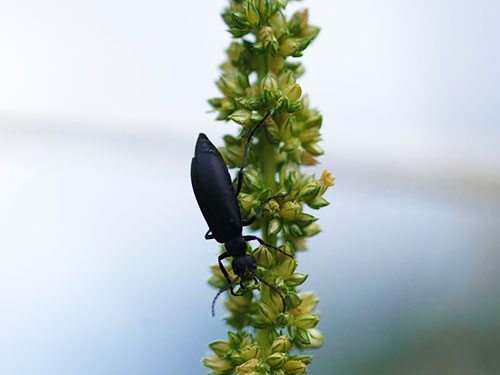Segregation and what it means in Palmer amaranth

by Fred Bourland (University of Arkansas)
Plant geneticists have discovered many different types of inheritance patterns that explain the genetic basis for resistance of plants to various diseases and insects. Resistance may be due to single or multiple genes having major or minor effects, which may be influenced by additional minor genes and/or interacting environmental effects. Furthermore, the genetics of resistance may be masked by poor expression that retards identification. Evaluation of the genetics of glyphosate resistance in Palmer amaranth will likely follow some known genetic model, but is complicated by several factors including:
- Palmer amaranth is a dioecious plant that reproduces by obligate out-crossing. As such, the species consists entirely of heterozygote plants. Genetic variability in populations is enhanced, since recombination of all genes is promoted, and unusual segregation ratios are likely to occur since typical segregation ratios assume crossing of homozygous parents. Additionally, sex-related factors may be associated with a dioecious plant.
- Protocols for measuring resistance to glyphosate in Palmer amaranth are not well established. Response to glyphosate by Palmer amaranth appears to vary with age of the weed, rate of the herbicide, and other factors. Therefore, different segregation ratios may be found in the same populations under different conditions. Before quantifying the genetics of the resistance, a biologically based definition and a protocol for measuring resistance are needed.
- Once resistance is defined, determining the genetics of glyphosate resistance may be still complicated by several factors. If resistance is due to two or more genes (multiple gene effects), segregation ratios may be skewed if the different genes have different degrees of influence. Minor or modifier genes influence the effects of major genes. Segregation ratios become less accurately assessed as number of genes increases.
- Expression of resistance may also vary due to penetrance and/or expressivity. Trait expression in homozygous populations may vary with respect to percentage of plants showing the trait (penetrance) or the extent of trait expression (expressivity). In such cases, segregation ratios will never reflect true genetic nature of the trait. Escapes may mimic the lack of complete penetrance.
- Palmer amaranth produces an extremely high number of seed that may be moved easily from one area to another. High population numbers enhance the probability that resistant biotypes may occur and enhance the spread of resistant biotypes once they do occur.
- Being an obligate heterozygote with prolific seed production, Palmer amaranth provides a perfect scenario for development of genetic variability. Glyphosate usage patterns provide strong selection pressure to develop resistance. Genetic variability together with strong selection pressure times prolific seed production equals rapid development and spread of resistance.









